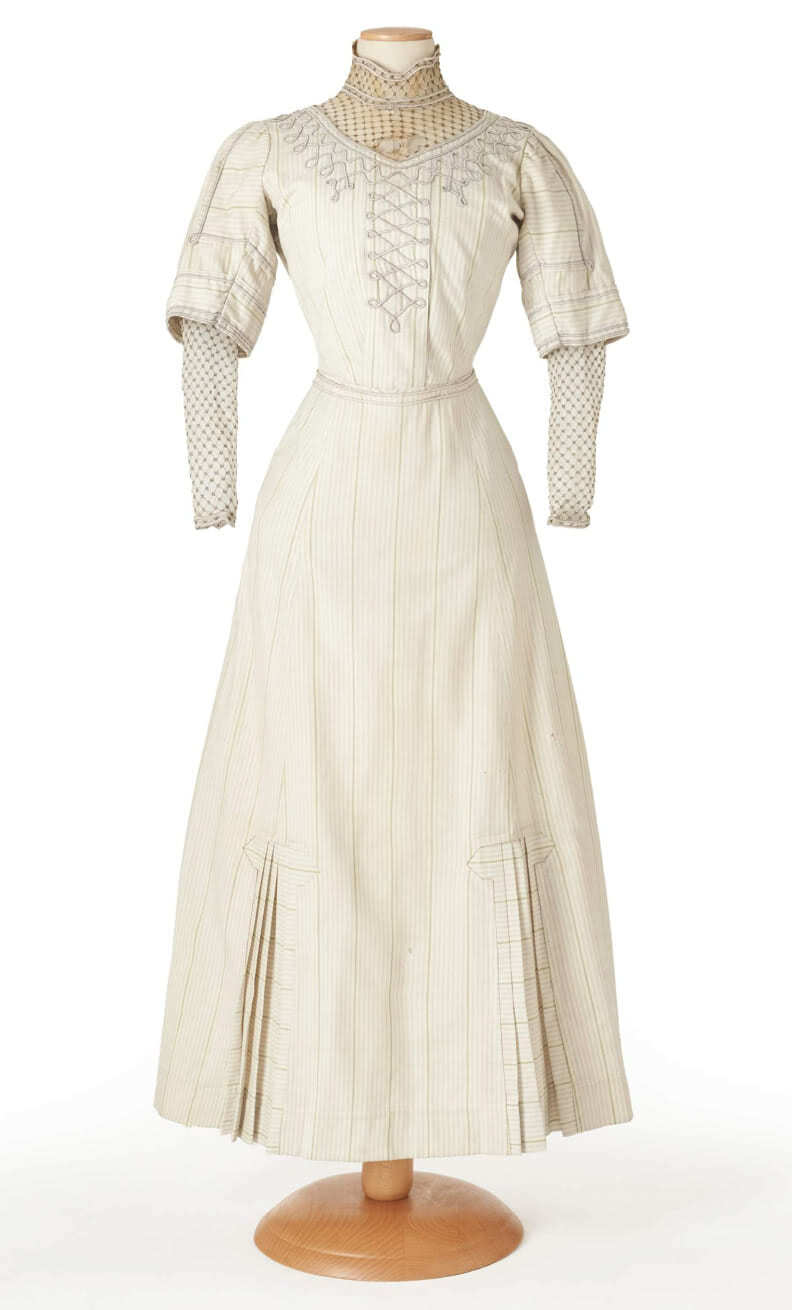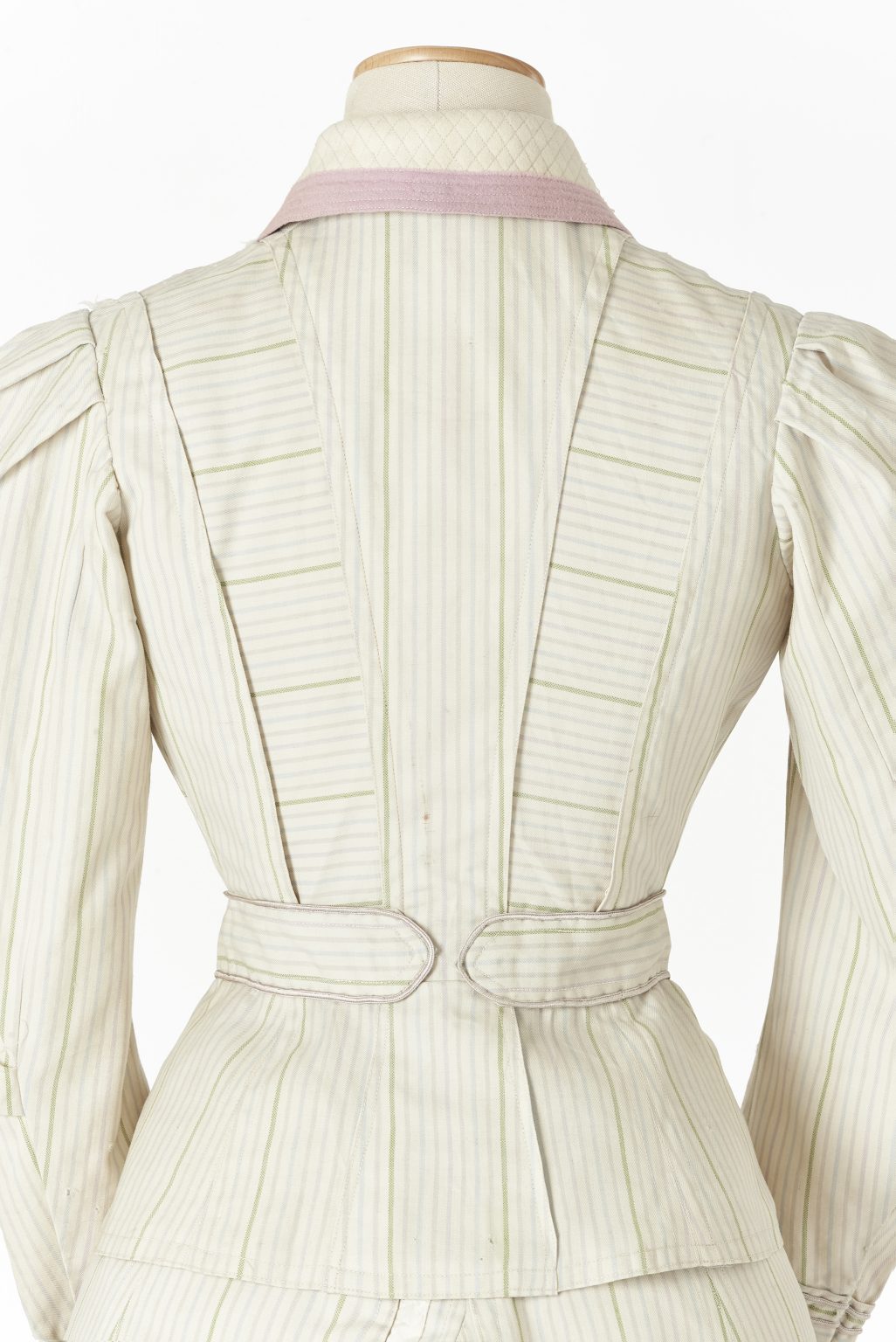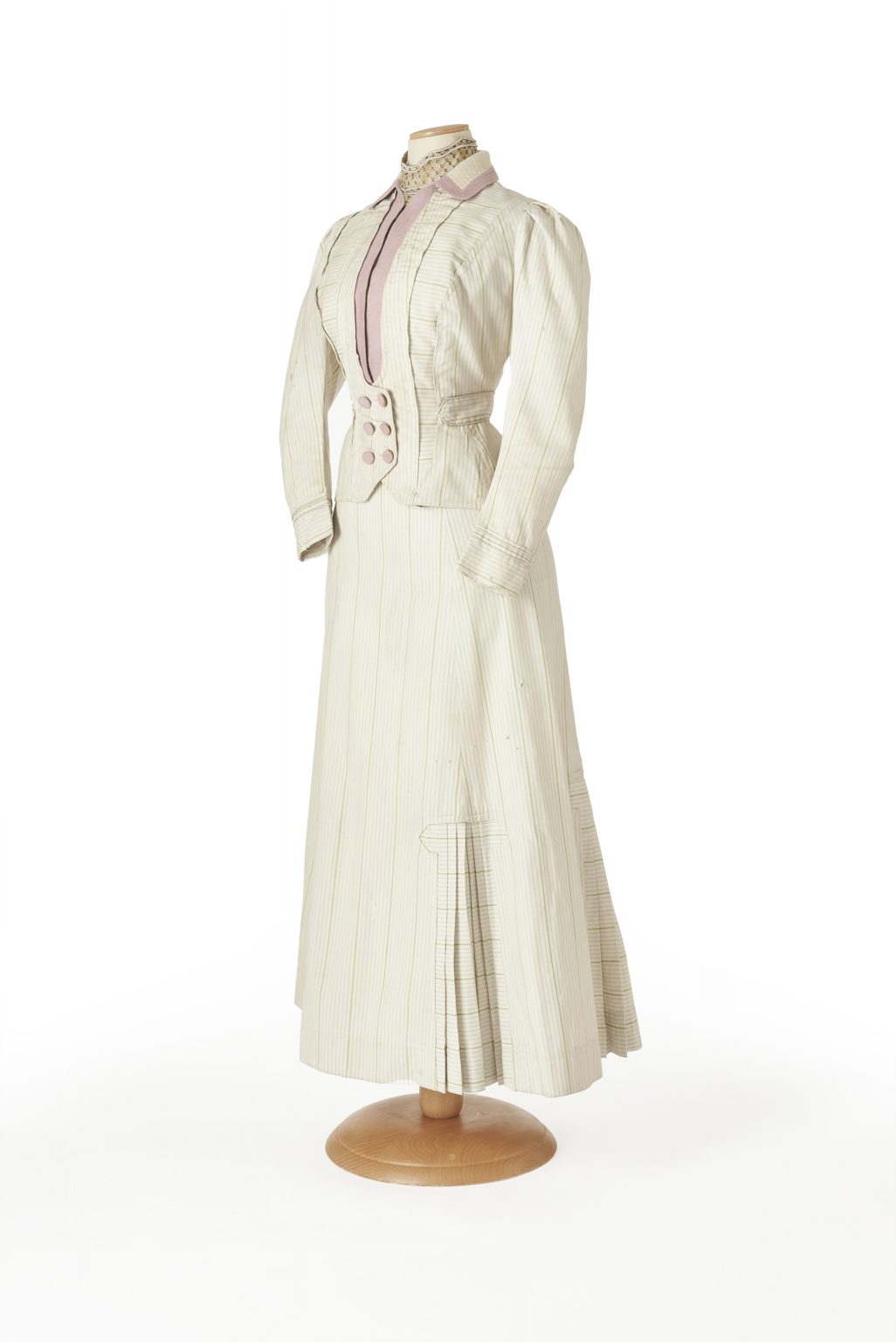
Day Dress 1908-13
Day dress consisting of a jacket, bodice and skirt, in ivory-coloured wool with green, lilac and light blue stripes, c. 1906-08, Camilla Colombo Collection.
Details


Technical info
Women
At the beginning of the 20th century, women were still excluded from political life in most countries of the world and only a very small minority had the right to vote. The topic of women's suffrage had begun to be discussed in the
middle of the 19th century, but the subject was confronted more decisively by the women’s organizations at the beginning of the 20th century. Two of the many organizations that called for the vote for women were the Women’s Social and Political Union founded in 1903 by Emmeline Pankhurst and the International Women’s Suffrage Alliance founded the following year by Carrie Chapman Catt. Both demanded the right to vote for women, sometimes through peaceful actions and sometimes through acts of civil disobedience or violence. The title “suffragette”, which was originally intended as a derisive term, was embraced by the more militant British Women’s Social and Political Union demanding the right to vote. In 1908 the WSPU proposed using a colour scheme so that those who adhered to suffragette ideas were instantly recognisable. The colours they chose were purple, white and green: as the weekly publication Votes for Women explained: “Purple as everyone knows is the royal colour, it stands for the royal blood that flows in the veins of every suffragette, the instinct of freedom and dignity…white stands for purity in private and public life…green is the colour of hope and the emblem of spring”.
Women were encouraged to use these colours to show their support for the cause and, such was the success, that clothes, accessories and jewellery, as well as everyday items such as tea sets or stationery in purple, white and green, were soon found in the London shops. This three-piece suit with purple and green stripes on a white background is an example of this trend. For their ideals, some suffragettes chained themselves to the gates of public offices, threw stones, were imprisoned and went on hunger strikes. The struggle stopped during the First World War, but their obstinacy, together with the proof of their undeniable abilities during the war, achieved important results after: in 1919 Nancy Astor became a member of the British Parliament and in 1920 American women obtained the right to vote. From this moment on, the
conquest of women’s political, civil and social rights spread more rapidly throughout the rest of the world. The desire for women’s emancipation was also strong in Italy which the National Committee for Suffrage, the First National Congress in Rome in 1908 and the founding of the Casa delle Donne (House of Women) by the Unione Femminile Nazionale (National Female Union) demonstrate. Italian feminists presented numerous bills to Parliament calling for votes for women, but they went unheeded. In 1912 Anna Kuliscioff, a socialist and promoter of women’s suffrage, commented on the umpteenth
debacle: “Nowadays, to be a citizen, Italians have only one precaution to take: to be born male” It was only towards the end of the Second World War in 1945 that Italian women gained significant progress with their demands and were granted the vote.